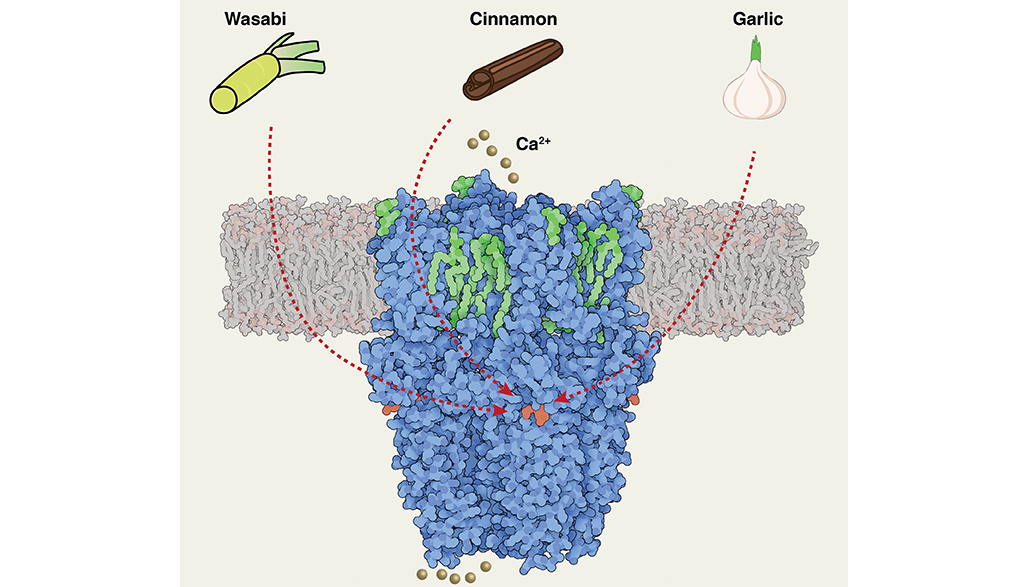
Researchers have captured the shape, in unprecedented detail, of a biological structure in the mouth, nose, and throat that senses pungent, irritating chemicals.
Their new map of “the wasabi sensor” appears in the journal Neuron.
The sensor, called TRPA1, is from a family of transient receptor potential channels, or TRP, that have been studied intensively as drug targets for pain and inflammation. The researchers jokingly call this one the wasabi sensor because of its sensitivity to chemical irritants, like the hot Japanese condiment. It’s the signaling spot for tear gas too.

There are at least 30 different kinds of TRP, specialized to sense pain, itch, heat, cold, and other sensations and turn them into signals to the brain, says coauthor Ru-Rong Ji, a professor of anesthesiology at the Duke University School of Medicine.
Researchers resolved the new structure down to less than 3 angstroms, slightly larger than a single atom, using a cryo-electron microscope. This level of detail can give researchers a dramatic new understanding of its functions at a molecular level.
“This is something special,” Ji says. “Now we can see a lot more detail and have mechanistic insight into how it functions.”
The TRPA1 sensor is also found in flies and fish, showing it has been “evolutionally conserved to sense environmental danger,” Ji says.
This is the sensor, for example, that tells you about garlic, cinnamon, and formalin, says Seok-Yong Lee, an associate professor of biochemistry in the School of Medicine. “It’s a means to sense the toxic stuff to avoid damage.”
This is the latest of several TRP structures Lee’s group has resolved, including the pain and itch sensors TRPV2 and TRPV3 , and TRPM8, a sensor of cool and menthol.
What’s interesting about the wasabi sensor is how many different kinds of irritants it responds to with extraordinary speed, Lee says. The new high-resolution structure lets researchers see a binding site where chemical irritants would attach to the sensor, which provides a clue to understand its versatile but rapid irritant sensing. However, they still need to understand how irritant binding leads to opening of the channel that allows the sending of a signal.
“This could help us develop new therapeutics targeting pain or itch,” Lee says.
Unlike many other TRP channels, this one signals acute inflammatory pain and neuropathic pain, as well as acute and chronic itch, depending on the type of stimulus. For example, the Ji lab recently discovered that microRNA activates TRPA1 by binding to a site different from that of wasabi to create an itch sensation.
“This channel is quite intriguing” Lee adds.
The National Institutes of Health supported the research.
Source: Duke University
The post Team maps the ‘wasabi sensor’ appeared first on Futurity.
from Futurity https://ift.tt/39I8rsJ
No comments:
Post a Comment